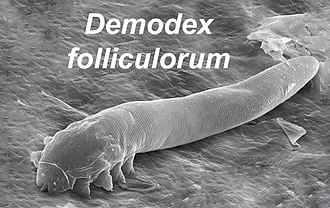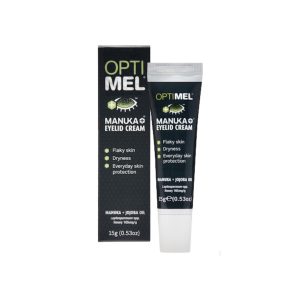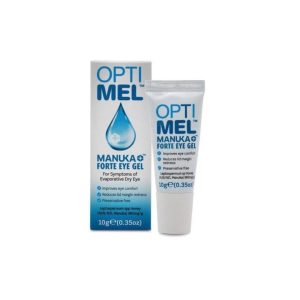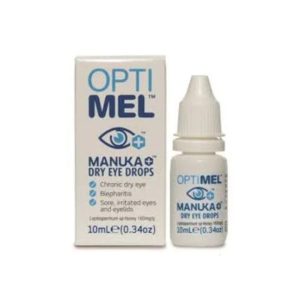Are you facing ongoing issues with dryness, irritation, or discomfort in your eyes? If this sounds familiar, you might be among the numerous individuals suffering from a chronic dry eye condition that could be linked to Demodex mites. These tiny, eight-legged organisms are a natural component of the human skin microbiome, particularly around the sensitive areas of the eyes and eyelids. However, an overpopulation of these mites can lead to inflammation, exacerbating the symptoms associated with dry eye syndrome and resulting in significant discomfort and irritation.
If you’ve been struggling with unexplainable dry eye symptoms, it’s crucial to explore the possibility that Demodex mites might be contributing to your discomfort. In this comprehensive guide, we will help you identify the signs of a Demodex infestation, clarify the intricate relationship between these mites and dry eye disease, and present effective treatment strategies designed to help control their population and relieve your symptoms.

Recognizing the Key Symptoms of Demodex Blepharitis
Individuals suffering from Demodex Blepharitis or an excessive number of these mites often experience a variety of troubling symptoms. Common signs of this condition include:
- Burning, stinging, or gritty sensations in the eyes, especially noticeable as the day progresses.
- Unexplained excessive tearing or watery eyes that aren’t linked to allergies or environmental factors.
- Red, inflamed eyelids, often accompanied by irritation of the skin surrounding the eyes.
- Crusty, dandruff-like buildup along the lashes and at the lid margins, often appearing as collarettes.
- Heightened sensitivity to light, leading to a persistent feeling that your eyes are squinting.
- Occurrences of fluctuating blurred vision throughout the day.
Many individuals endure these dry eye symptoms for years, often unaware that a Demodex mite infestation may be the underlying cause. Recognizing these critical symptoms is a fundamental step in effectively addressing the root issue and finding appropriate relief.

Exploring the Connection Between Demodex Mites and Dry Eye Symptoms
Ever wondered how these minuscule creatures contribute to distressing dry eye symptoms? Demodex mites thrive on the natural oils and skin cells present on the surface of our skin, particularly in the hair follicles of the eyelashes. As they consume these materials, they release waste products, eggs, and the remnants of deceased mites, which accumulate along the eyelid margins. This buildup generates a thick layer of debris and a bacterial biofilm that can obstruct the delicate oil glands essential for maintaining optimal eye health.
When these oil glands are unable to produce sufficient oils, dry patches can quickly form on the eye’s surface. This oily tear film is crucial for preventing rapid evaporation of the watery tears that keep our eyes hydrated and comfortable. The inflammation caused by such blockages can intensify irritation, redness, and the uncomfortable gritty sensation commonly associated with dry eye conditions, making it vital to address the underlying issue.
Gaining Insight into the Life Cycle of Demodex Mites for Targeted Treatment
Understanding the life cycle of Demodex mites is essential for developing effective treatment strategies. These mites progress through several stages: egg, larva, nymph, and adult, over a life cycle lasting approximately 14 to 21 days. They are most active during the night, when they leave their hair follicles to mate and lay new eggs on the skin’s surface.
This nocturnal behavior suggests that the optimal time to apply Demodex treatments is in the evening, just before bedtime. By targeting the mites during their peak activity, you can significantly enhance the effectiveness of your treatment. However, due to their rapid reproductive capabilities, any surviving mites can quickly repopulate, which makes consistent treatment necessary over several weeks or even months to achieve lasting relief and management of the symptoms.
Effective Strategies for Managing Dry Eye Issues Related to Demodex
If your optometrist identifies a high concentration of Demodex mites through eyelash sampling or microscopic examination, they may recommend several treatment options to combat the infestation:
1. Harnessing the Power of Tea Tree Oil Eyelid Wipes and Scrubs for Relief
Products enriched with tea tree oil possess potent antimicrobial and antiparasitic properties, making them exceptionally effective in eliminating these mites. These formulations can efficiently remove surface mites, dissolve collarettes formed by these pests, and help dislodge deeper-seated mites, making them more susceptible to treatment.
While tea tree oil is a powerful agent against mites, it can cause a stinging sensation upon application and may be cytotoxic to healthy cells, potentially aggravating symptoms for certain individuals.
Consistent application of tea tree oil eyelid wipes or scrubs before bedtime can gradually diminish the mite population. A notable example of an effective tea tree oil treatment is OcuSoft Oust Foam, which has proven particularly beneficial for managing blepharitis primarily caused by Demodex mites.
2. Gentle Hypochlorous Acid Lid Hygiene Sprays for Safe Eye Care
Hypochlorous acid is a naturally occurring substance generated by our immune system that acts as an effective antimicrobial agent. It is gentle on the eyes, does not cause stinging, and is safe for our cells.
Lid hygiene sprays and cleansing foams containing hypochlorous acid not only eliminate mites but also help reduce inflammation and provide relief from symptoms. Applying these solutions to the lash lines before bed can effectively eradicate mites and their debris. Many of these products have a distinct odor reminiscent of chlorinated water. Popular hypochlorous acid-based solutions include Ocusoft Hypochlor Spray and Avenova.
Among these, Ocusoft Hypochlor Foam is often recommended due to its excellent value and prolonged shelf life after opening, making it a practical choice for ongoing management of Demodex-related symptoms.
3. Utilizing Manuka Honey Solutions for Enhanced Eye Care
Recent studies have shown that Manuka Honey solutions may be as effective as 50% tea tree oil against Demodex, although further research is necessary in this area. While it may cause a slight sting upon application, Manuka Honey is generally less irritating than tea tree oil and has demonstrated excellent efficacy against other forms of blepharitis. It is non-cytotoxic and less likely to trigger inflammation in the eyelids.
Many patients report that any initial sting is well worth it, as they often experience significant relief afterward. Manuka Honey solutions are available in gel form (such as Optimel Forte, which is more effective but may sting more) and as drops (like Optimel Drops, which are easier to apply and cause less stinging).
4. Addressing Severe Demodex Infestations with Oral Anti-Parasitic Medications
In cases where Demodex overpopulation is severe and persistent, healthcare professionals may choose to prescribe oral antiparasitic medications. For instance, formulations such as Ivermectin in pill form have proven effective in managing these infestations. Additionally, weekly doses of oral tea tree oil supplements taken over several months can help maintain mite levels and provide longer-lasting relief from symptoms.
5. Exploring Professional Treatments for Advanced Management of Demodex
Some eye clinics provide intensive in-office treatments specifically designed for Demodex management, utilizing specialized products like Oust Demodex Cleanser Swabstix or a hand-held electric brush known as BlephEx.
The Oust Demodex Cleanser Swabstix delivers targeted treatment options that can significantly reduce the impact of these troublesome mites on your eyelid health.
The Article: Demodex Mites Linked to Chronic Dry Eye Issues first appeared on https://writebuff.com.
The Article Demodex Mites and Their Connection to Chronic Dry Eye Was Found On https://limitsofstrategy.com








Comments are closed